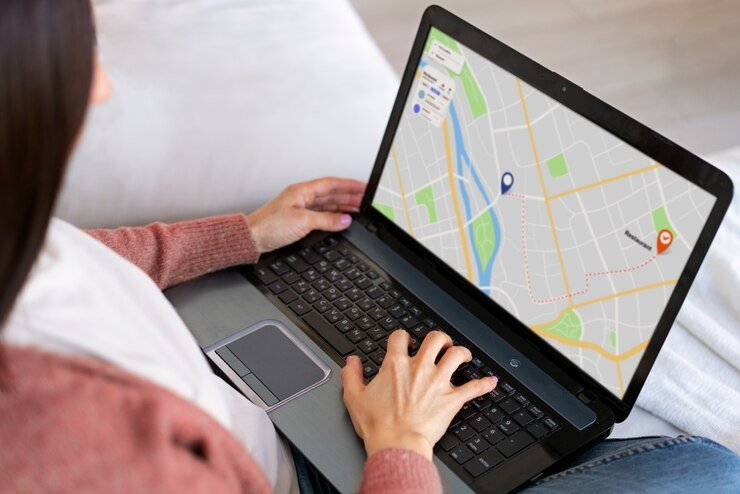
Introduction to IP Addresses
Have you ever wondered what an IP address really is? Or why it matters in your everyday online activities? Whether you’re streaming a movie, gaming with friends, or simply browsing the web, your IP address plays a crucial role. It’s like your digital home address—essential for sending and receiving information on the internet. Knowing how to find your IP address can enhance your online experience and help you troubleshoot various connectivity issues.
In this guide, we’ll walk through everything you need to know about finding your IP address on different devices. From Windows computers to smartphones, we’ve got you covered! Get ready to dive into the world of IP addresses and discover just how easy it is to locate yours.
What is an IP Address?
An IP address, or Internet Protocol address, is a unique identifier assigned to each device connected to a network. It acts as the postal address for your devices on the internet, allowing them to send and receive data seamlessly.
There are two types of IP addresses: IPv4 and IPv6. IPv4 consists of four sets of numbers separated by periods, while IPv6 uses a longer format with eight groups of alphanumeric characters.
This distinction helps accommodate the growing number of devices online. As more people connect their smartphones, computers, and smart home gadgets to the internet, having sufficient IP addresses becomes crucial.
Your IP address reveals information about your geographical location and your internet service provider (ISP). Understanding this can help you troubleshoot connectivity issues or configure network settings effectively.
Why Knowing Your IP Address is Important
Understanding your IP address can be crucial for various reasons. It serves as a unique identifier for your device on the internet, enabling communication between devices and networks.
Knowing your IP address is particularly important when troubleshooting connectivity issues. If you encounter problems accessing websites or services, having this information helps in diagnosing potential network failures.
For online security, being aware of your IP address allows you to monitor any unauthorized access attempts. You can take measures to protect yourself if something seems off.
Additionally, certain online activities, like remote work or virtual gaming, require knowledge of your public IP address. This ensures seamless connections without unexpected interruptions.
Some websites tailor content based on geographic location linked to an IP address. Understanding yours means accessing localized services and relevant information effortlessly.
How to Find Your IP Address on a Windows Computer
Finding your IP address on a Windows computer is straightforward. Start by clicking the “Start” menu or pressing the Windows key on your keyboard.
Type “cmd” in the search bar and hit enter to open the Command Prompt. This tool allows you to run various commands, including those that reveal network information.
Once Command Prompt is open, type `ipconfig` and press Enter. You’ll see a list of network configurations for your system.
Look for “IPv4 Address.” This number typically appears in a format like 192.168.x.x. That’s your local IP address within your home or office network.
If you’re curious about your public IP address, simply visit a site like whatismyip.com using any web browser. It displays this information instantly without any hassle.
How to Find Your IP Address on a Mac Computer
Finding your IP address on a Mac is straightforward. Start by clicking the Apple logo in the top-left corner of your screen.
Select “System Preferences” from the drop-down menu. This opens up various settings for your Mac.
Next, click on “Network.” You’ll see a list of network connections on the left side. Choose either Wi-Fi or Ethernet, depending on how you’re connected to the internet.
Once you select your connection, look for “IP Address” on the right side of the window. It should be displayed clearly under “Status.”
If you’re using Wi-Fi and may want other details, click “Advanced” at the bottom right corner. Then navigate to the “TCP/IP” tab where you’ll find more information about your network configuration.
How to Find Your IP Address on an iPhone or Android Device
How to find your ip address on an iPhone is straightforward. Start by navigating to the “Settings” app. From there, tap on “Wi-Fi.” Once you’ve connected to a network, select the information icon (the small “i”) next to your network name. You’ll see your IP address listed under “IP Address.”
For Android devices, it varies slightly based on the version and manufacturer. Generally, head over to “Settings,” then choose “Network & internet.” Tap on “Wi-Fi” and select the network you’re connected to. Look for options like “Advanced” or “Details,” where you’ll find your device’s IP address displayed clearly.
Both methods provide quick access without any hassle. Knowing how to locate this information can be handy for troubleshooting connectivity issues or configuring settings related to your home network.
Troubleshooting Common Issues with Finding Your IP Address
Finding your IP address can sometimes be a hassle. If you’re having trouble, don’t worry; it happens to the best of us.
First, ensure that you are connected to the internet. Without an active connection, fetching your IP will be impossible. Check Wi-Fi settings or Ethernet connections for any issues.
If you’re on Windows and nothing shows up, try running Command Prompt as an administrator. Type “ipconfig” again—sometimes permissions make all the difference.
For Mac users, check System Preferences under Network settings again if you see no results. Ensure you have selected the correct network interface; it might seem small but can lead to confusion.
Mobile devices also pose challenges occasionally. Restarting your device often refreshes its network status and may reveal your IP after rebooting.
If these methods fail, consider contacting your Internet Service Provider. They can help identify whether there’s an issue with your connection itself.
What is an IP Address and Why It’s Important?
An IP address, or Internet Protocol address, is a unique string of numbers assigned to each device connected to the internet. Think of it as your digital home address. It allows devices to send and receive information across networks.
Understanding your IP address is vital for various reasons. For one, it helps identify your location on the web, facilitating communication between devices. When you browse online or stream content, your IP ensures that data reaches you without confusion.
Moreover, knowing your IP can enhance security measures. It enables users to recognize unusual activity linked to their network and take appropriate action if needed.
Having insight into your IP can improve troubleshooting efforts when connectivity issues arise—making it easier to resolve problems efficiently.
How to Find Your IP Address on an iOS Device
Finding your IP address on an iOS device is simple. Start by opening the “Settings” app on your iPhone or iPad.
Scroll down and tap on “Wi-Fi.” Here, you will see a list of available networks. Find the network to which you’re connected, then tap the small blue information icon (ℹ️) next to it.
Once inside, look for the section labeled “IP Address.” Your device’s current IP address will be displayed there.
If you are using cellular data instead of Wi-Fi, go back to Settings and select “Cellular.” Scroll down until you find “Cellular Data Options” where you can also view your IP information when connected.
That’s all there is to it! Now you’ve got your IP details right at hand for any purpose you might need them.
Other Ways to Check Your IP Address
Beyond the conventional methods of checking your IP address, there are several online tools available. Websites like WhatIsMyIP.com and IPChicken offer instant access to your public IP without any hassle. Simply visit these sites, and they display your address prominently.
You can also use command line utilities for a more technical approach. On Windows, open Command Prompt and type “ipconfig.” For Mac users, Terminal is your friend—just enter “ifconfig” to see relevant details.
Many routers provide an interface where you can check the connected devices along with their respective IP addresses. Log into your router’s admin panel through its gateway address.
Mobile apps designed for network analysis can show you both local and public IPs conveniently on smartphones. These diverse options cater to different preferences and needs in finding your IP address effortlessly.
Benefits of Knowing Your IP Address
Knowing your IP address offers several practical benefits. It allows you to troubleshoot network issues more effectively. When you’re aware of your device’s IP, identifying connectivity problems becomes much simpler.
Another advantage is enhanced security. By monitoring your IP address, you can detect any unauthorized access or unusual activity on your network. This awareness helps in taking timely action to protect personal information.
Additionally, understanding your IP can improve online experiences. Certain websites and services may tailor content based on geographic location tied to your IP address. Being aware of this can enhance streaming quality or provide better search results.
For those engaged in remote work or gaming, knowing how to find and share an IP address streamlines collaboration with colleagues or friends during gaming sessions. These benefits make familiarizing yourself with this number quite valuable.
RELATED POSTS
View all


